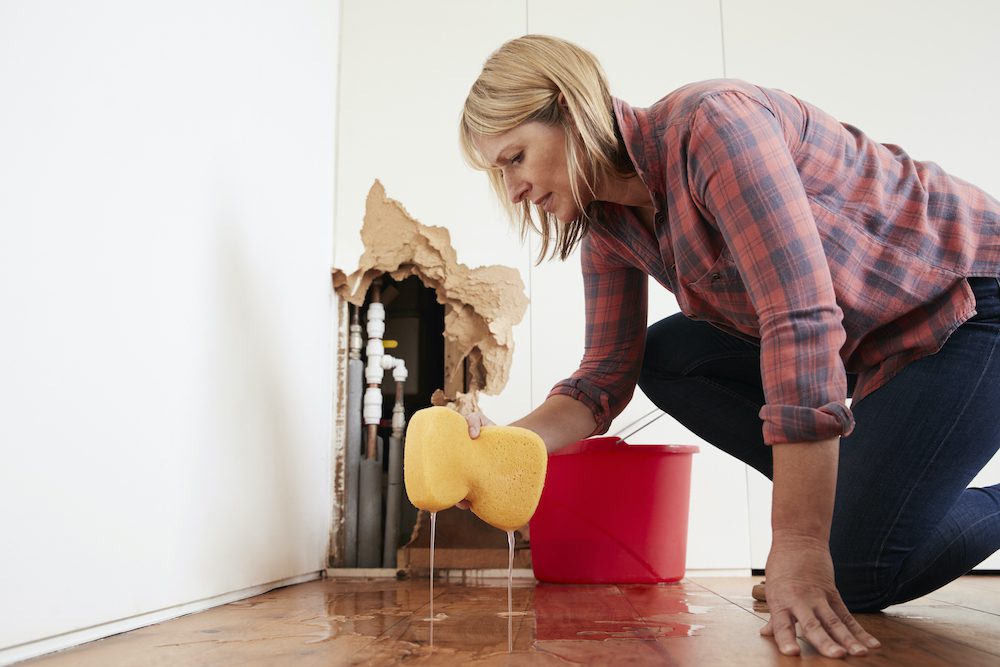Reveal Concealed Water Line Leaks: 6 Tested Finding Techniques
Reveal Concealed Water Line Leaks: 6 Tested Finding Techniques
Blog Article
They are making a number of great points regarding Finding hidden leaks as a whole in this content below.

Early detection of dripping water lines can reduce a potential disaster. Aside from saving you money, it will reduce the worry and disappointment. The minute you discover a leakage, calling your plumber for repair work is the best remedy. Some small water leaks might not be noticeable. Here are some hacks that help if you can not identify it with your naked eyes.
1. Examine the Water Meter
Examining it is a proven method that helps you uncover leakages. If it moves, that suggests a fast-moving leakage. This means you may have a slow-moving leak that might even be underground.
2. Inspect Water Intake
Evaluate your water bills and track your water usage. As the one paying it, you must notice if there are any inconsistencies. If you find sudden changes, despite your consumption being the same, it suggests that you have leaks in your plumbing system. Keep in mind, your water costs need to fall under the very same variety on a monthly basis. An abrupt spike in your costs suggests a fast-moving leakage.
On the other hand, a stable increase on a monthly basis, despite the same habits, reveals you have a slow-moving leakage that's likewise slowly rising. Call a plumber to completely inspect your residential property, especially if you feel a warm location on your floor with piping beneath.
3. Do a Food Coloring Test
When it comes to water intake, 30% comes from toilets. If the shade somehow infiltrates your dish throughout that time without flushing, there's a leakage in between the tank and bowl.
4. Asses Exterior Lines
Don't forget to examine your outside water lines as well. Examination faucets by attaching a garden hose pipe. Should water leak out of the connection, you have a loose rubber gasket. Change this and also ensure all links are tight. It will aid get it expertly analyzed and kept yearly if you've obtained a sprinkler system. One small leakage can lose tons of water and also increase your water expense.
5. Evaluate and also Assess the Circumstance
Home owners ought to make it a practice to examine under the sink counters and also inside closets for any bad odor or mold growth. These 2 warnings indicate a leakage so punctual interest is needed. Doing routine examinations, even bi-annually, can save you from a significant problem.
Examine for stainings as well as deteriorating as many pipes and also devices have a life expectancy. If you believe dripping water lines in your plumbing system, do not wait for it to escalate.
Early discovery of dripping water lines can reduce a potential disaster. Some little water leakages might not be visible. Examining it is a guaranteed method that assists you discover leakages. One little leakage can throw away tons of water as well as surge your water costs.
If you presume dripping water lines in your plumbing system, don't wait for it to intensify.
WARNING SIGNS OF WATER LEAKAGE BEHIND THE WALL
PERSISTENT MUSTY ODORS
As water slowly drips from a leaky pipe inside the wall, flooring and sheetrock stay damp and develop an odor similar to wet cardboard. It generates a musty smell that can help you find hidden leaks.
MOLD IN UNUSUAL AREAS
Mold usually grows in wet areas like kitchens, baths and laundry rooms. If you spot the stuff on walls or baseboards in other rooms of the house, it’s a good indicator of undetected water leaks.
STAINS THAT GROW
When mold thrives around a leaky pipe, it sometimes takes hold on the inside surface of the affected wall. A growing stain on otherwise clean sheetrock is often your sign of a hidden plumbing problem.
PEELING OR BUBBLING WALLPAPER / PAINT
This clue is easy to miss in rooms that don’t get much use. When you see wallpaper separating along seams or paint bubbling or flaking off the wall, blame sheetrock that stays wet because of an undetected leak.
BUCKLED CEILINGS AND STAINED FLOORS
If ceilings or floors in bathrooms, kitchens or laundry areas develop structural problems, don’t rule out constant damp inside the walls. Wet sheetrock can affect adjacent framing, flooring and ceilings.
https://www.servicemasterbyzaba.com/blog/how-to-detect-water-leakage-in-walls/

As a keen person who reads about Hacks to detect leaks, I thought sharing that information was mandatory. Don't hesitate to set aside a second to distribute this entry if you liked it. I am grateful for your time. Don't forget to come visit our website back soon.
We're your solution! Report this page